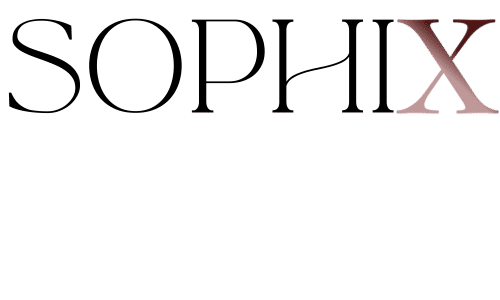There are three different types of boundaries we all need to examine to make our businesses operate smoother: calendar, connections, clients/customers. Today we will look at our calendars, which will help protect your schedule.
Women entrepreneurs tell me all of the time that their calendar is probably their biggest challenge. They listen to me talk of working my model calendar where I look at my week as a whole and then block out times to for my core CEO tasks. That might be working with clients, doing my sales and marketing, or doing some new business development.
So the first things I feel are important for you to add to your calendar would be your SOP—Standard Operating Procedures:
How you’re going to manage your calendar?
What are your working hours?
 Most businesses have hours that they are open and hours that they are closed. You wouldn’t visit Macys at 2:00 AM and expect them to be open. Macys is closed at 2:00 AM and I cannot go there just to browse around the aisles. So I know that. It is a boundary of my mind. I don’t expect that it’s going to magically open for me.
Most businesses have hours that they are open and hours that they are closed. You wouldn’t visit Macys at 2:00 AM and expect them to be open. Macys is closed at 2:00 AM and I cannot go there just to browse around the aisles. So I know that. It is a boundary of my mind. I don’t expect that it’s going to magically open for me.
But somehow – especially for service-based business owners – we start to feel as though we need to be accessible 24/7. This is a huge issue. Because suddenly you’re out on date night with your significant other and, instead of paying attention to them, you are scrolling your email and feeling panicked because someone has emailed you at 10:00 PM and you feel like you need to be accessible.
Set some work hours in place and communicate them to your clients/customers, assistants, etc. Communicate the hours that you are available.
When my clients tell me that they are beginning to feel drained, the easiest way for me to figure out why is to look at their calendar. What I often see is a calendar that is super haphazard. They have appointments spread all over the week; therefore, they are unable to get in any sort of flow. They might have a client appointment one morning, an hour available after that, and then another client appointment. And then the next day, it is like they are trying to fit in all their other work in between these clients. And because of that, they never enter a state of flow. It is actually taking a tremendous amount of energy and it is wearing them out.
If you don’t know what flow state is, run a Google search. You will find great research and literature out there about getting in the flow state.
Basically, flow state suggests that when you group like tasks together, you are able to get in the zone where you actually do much better work. All of your attention is in that one area. For example, if you meet with all your clients on one day, suddenly you enter a flow state where you are able to get a lot more accomplished with them. If you’re doing creative work and you have longer periods of time blocked out, you are able to get into a flow state where you’re more productive. You’re able to get more quality work accomplished because you can get into that state of deep work, which is critical. A great book to read about this is Deep Work by Cal Newport.
If you don’t protect your schedule by managing your calendar and you allow people to book your time here, there, and everywhere, you are actually sabotaging yourself. You are cannibalizing your flow state – your most creative zone that you can get into where you can create all the new content you can create, or you can create all those new things for your clients/customers. Or you can do the higher level CEO work that you need to do.
 When I look at my model calendar, the most important thing is my working hours followed by grouping together like with like. I have themed days. I’m only going to have client meetings on Mondays and Wednesdays. I always conduct my Q&A calls for my group program on Tuesdays. I will only say “yes” to extra calls on Fridays. (Extra calls are basically connections calls or interviews. It’s not a client, it’s not my content related). They are in our calendar SOP. We do our best to keep all those things. If I have to connect with a team member, that will be on Thursdays because that’s my CEO date.
When I look at my model calendar, the most important thing is my working hours followed by grouping together like with like. I have themed days. I’m only going to have client meetings on Mondays and Wednesdays. I always conduct my Q&A calls for my group program on Tuesdays. I will only say “yes” to extra calls on Fridays. (Extra calls are basically connections calls or interviews. It’s not a client, it’s not my content related). They are in our calendar SOP. We do our best to keep all those things. If I have to connect with a team member, that will be on Thursdays because that’s my CEO date.
I know my work hours. I'm always aware of my client meeting days. I know my content days. I know my CEO days. I know my course days. And then I have a day, my flex Fridays, as my catch all day for holding other types of meetings.
I begin my client days at 9:00 and then I have a 10:30, then I have a 12:00, and then I have a 1:30. And that’s still enough for me to get done in the time I have while my work hours are happening. My schedule allows a half an hour between each client, which is great because then I can wrap up my notes, take a quick walk around the block, stretch – whatever I need to do to take care of myself. And I feel like I have a lot more time. This makes my life so much easier.
So I encourage you to think about your model calendar:
Think about what are your core CEO tasks that need prioritizing.
Then, what are your calendar SOPs?
How are you going to handle the requests that come in?
What are the times you have available for clients?
What are the times you have available for holding connection calls or meeting people for lunch?
Get those SOPs down so that you aren’t juggling with figuring all those out in the moment. Because in the moment means a higher likelihood of committing to something you shouldn’t really be saying yes to. It’s when the people-pleasing takes over.
If you need to, get a support person in place to help you enforce your time boundary. Honestly, your clients/customers will be happier because they’ll know what to expect. And you’ll be happier because you won’t consistently be feeling as though you are being pushed too far.
When you protect your schedule, you are taking a great step in taking back control of your business.



 Most businesses have hours that they are open and hours that they are closed. You wouldn’t visit Macys at 2:00 AM and expect them to be open. Macys is closed at 2:00 AM and I cannot go there just to browse around the aisles. So I know that. It is a boundary of my mind. I don’t expect that it’s going to magically open for me.
Most businesses have hours that they are open and hours that they are closed. You wouldn’t visit Macys at 2:00 AM and expect them to be open. Macys is closed at 2:00 AM and I cannot go there just to browse around the aisles. So I know that. It is a boundary of my mind. I don’t expect that it’s going to magically open for me. When I look at my model calendar, the most important thing is my working hours followed by grouping together like with like. I have themed days. I’m only going to have client meetings on Mondays and Wednesdays. I always conduct my Q&A calls for my group program on Tuesdays. I will only say “yes” to extra calls on Fridays. (Extra calls are basically connections calls or interviews. It’s not a client, it’s not my content related). They are in our calendar SOP. We do our best to keep all those things. If I have to connect with a team member, that will be on Thursdays because that’s my CEO date.
When I look at my model calendar, the most important thing is my working hours followed by grouping together like with like. I have themed days. I’m only going to have client meetings on Mondays and Wednesdays. I always conduct my Q&A calls for my group program on Tuesdays. I will only say “yes” to extra calls on Fridays. (Extra calls are basically connections calls or interviews. It’s not a client, it’s not my content related). They are in our calendar SOP. We do our best to keep all those things. If I have to connect with a team member, that will be on Thursdays because that’s my CEO date.
